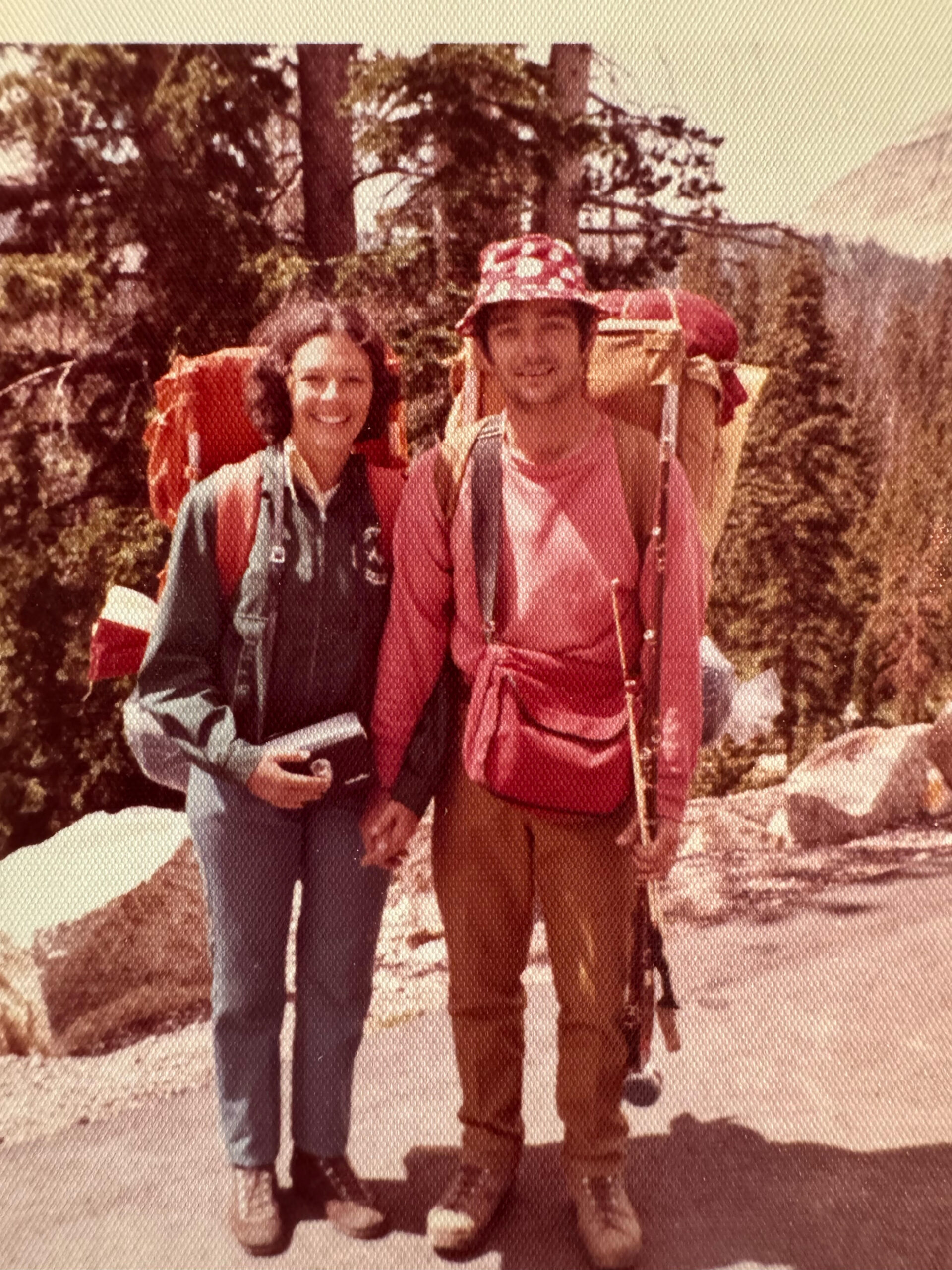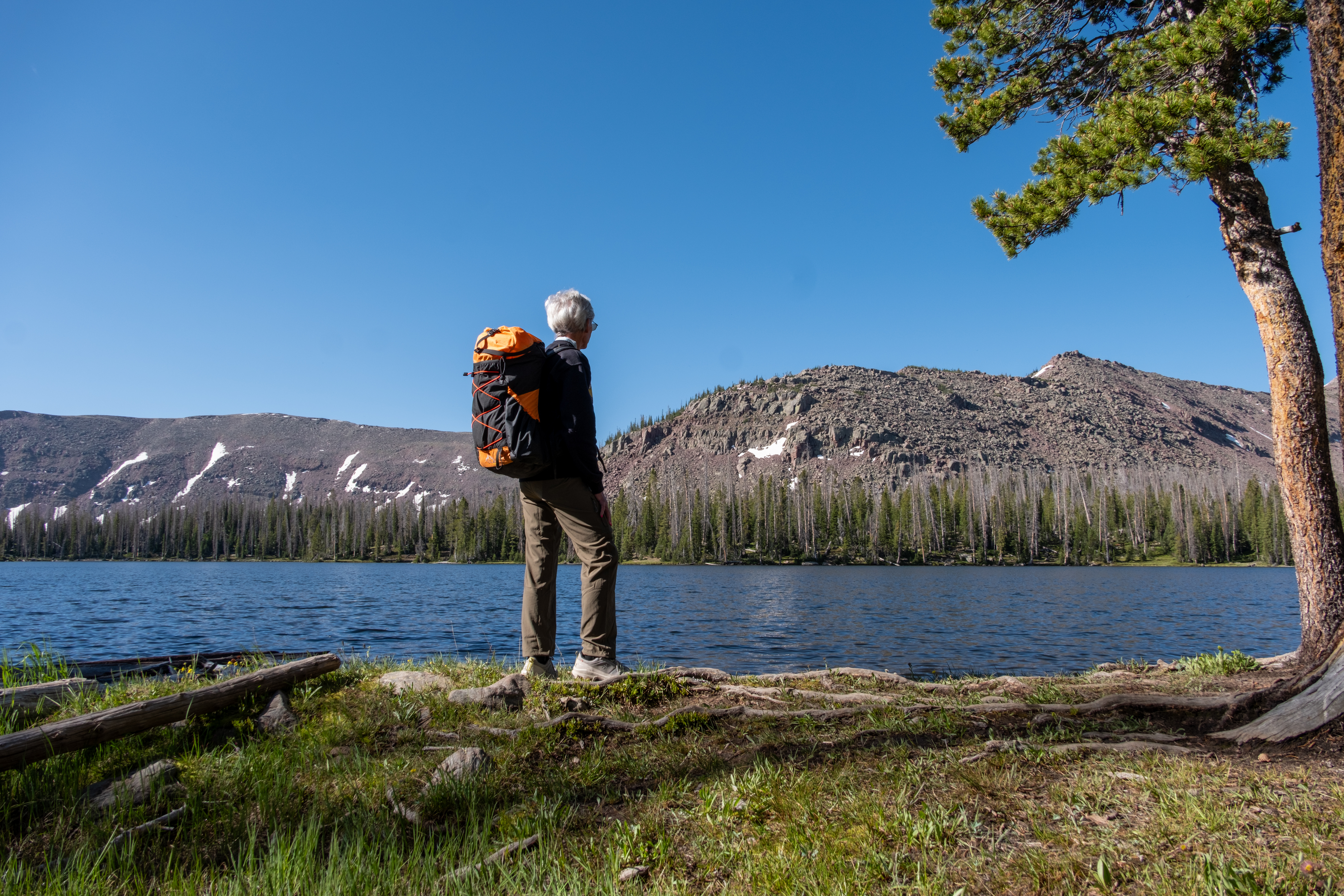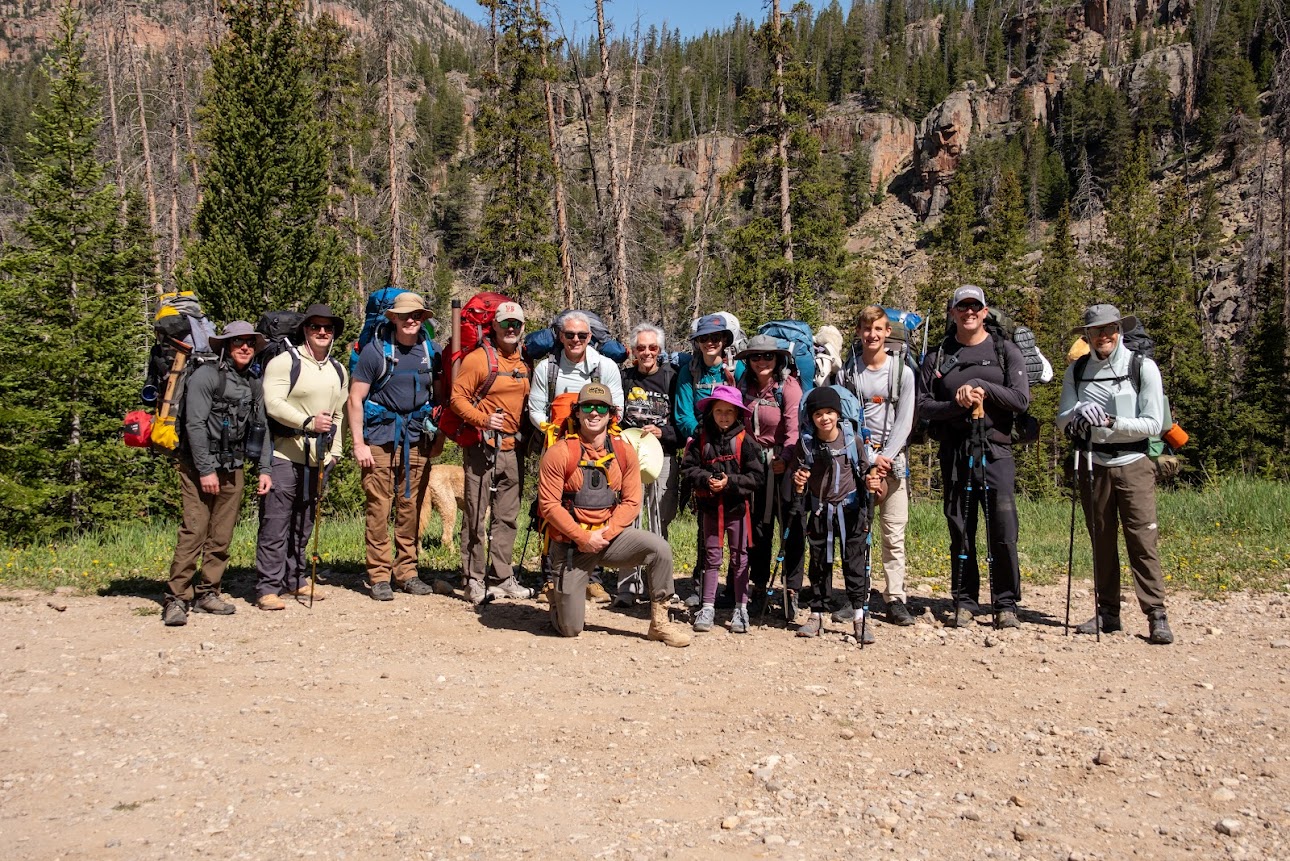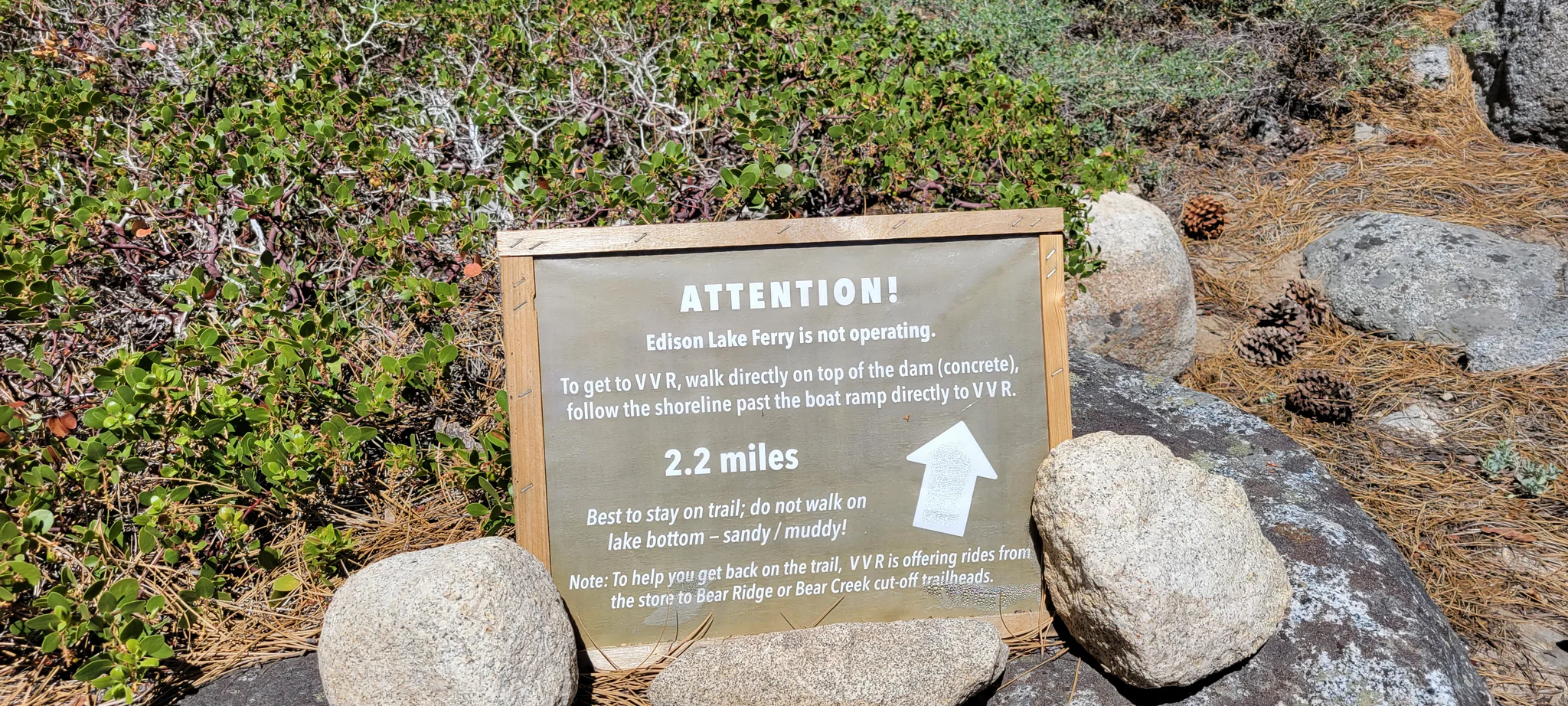
Aging into Ultralight: Why Older Backpackers Should Rethink Their Gear and Embrace the UL Life
Garrett’s preface: Although this article targets an aging enthusiast it’s not to say ultralight backpacking only benefits older people or that older people aren’t spry enough to handle an 11,000 foot pass with 40lbs worth of gear. There have been plenty of times an older hiker passed me on a thru-hike and I never saw them again. It’s more for encouraging those that are feeling demotivated and lost or think they’re incapable of outdoor recreation at their same levels. As a 34 year old I still feel my back, knees, and joints ache while out on a trip so don’t take this as a youngish man lecturing others or trying to say only older people experience these symptoms.
This article originally stemmed from an encounter I had on the Pacific Crest Trail where I met a 70 year old couple from North Texas that were attempting to go all the way. Recently, however, Peter’s friend Ryan took a family trip to the Uintas with his 82 year old mother while she sported a custom Nexus. I knew I had to wait to publish this article for some proof of the overarching idea and can’t think of anything more badass than an 82 year old woman going on a backpacking trip with her family.
From Ryan:
Peter, here is a summary of Mom and Dad, the Uintas and our latest trip
– The pic of the two of them is from 1968 (shown left)
– They first started going in to the Uintas in 1962 or so and mom continued until there were just too many children to leave, 7 kids total
– Mom was born in 1943 and will be 82 in September- Her last trip was in 1980, Dad continued taking the boys in until his last trip in 2002. His lungs were getting just bad enough that he couldn’t handle the altitude anymore. Dad passed away last October at 81 yrs old. They were married 61 years
– On this last trip she had 2 sons, 6 grandkids and 3 great grandkids with us
– The hike itself was Granddaddy Basin area, 5 miles, starting at 9,000 feet with 1200 feet of elevation gain to boot. The camp was at 9800 ft.
Why Going Lighter Matters More As You Age
When you apply the main tenant of the Ultralight ethos – take only what you need – it opens up a possibility for more engaging, enjoyable, and frequent day hikes as well as overnighter trips.
If you’re already in the “know” enough to find a ULA-Equipment blog post, we’re likely preaching to the choir here. This is more for the auxiliary friend, family member, or coworker that you maybe don’t really like that much but still want them to have a better life.
For older backpackers, ultralight gear isn’t a gimmick. It’s an invaluable tool for staying out longer, going farther, and actually enjoying the trail instead of just surviving it. And in many cases, it’s the difference between going out in the backcountry or staying home.
This post is a deep dive into why ultralight backpacking can be a game-changer for older adventurers. And by the way, this advice isn’t just for those approaching retirement – everyone can apply this mindset to have a better time in the backcountry.
When you’re younger, you can muscle through bad gear choices for the most part. A 45-pound pack is more of a nuisance than a limitation. The main thing someone younger needs to worry about is managing their pacing to ensure their ligaments don’t give up before their muscles. But later in life, every pound becomes a tax on your body—on your knees, back, balance, and energy.
1. Joint and Muscle Relief
Carrying less means less strain on your joints. For hikers over 60, this is a big deal. The cartilage in your knees and hips isn’t regenerating like it used to. Ligaments aren’t as elastic. Every ounce you remove from your back is an ounce of pressure removed from your knees with every single step.
This can lead a lot of people to avoid more strenuous physical activity like backpacking. This not only forgoes healthy physical activity, you also miss out on the beauty of nature and the legitimate mental health benefits that accompany it.
The CDC reports that many adults aged 50 and older fall short of the recommended 150 minutes of moderate aerobic activity per week and two days of muscle-strengthening work. And those with chronic health conditions are especially prone to inactivity, which puts them at higher risk for functional decline and chronic illness
Ultralight backpacking delivers a powerful combination of moderate-intensity aerobic movement (hiking), strength training (carrying a well-balanced, lighter pack engages your core, back, shoulders, and legs), and balance challenges (navigating uneven trails naturally improves stability)—essential components of healthy aging.
Plus, the mental refresh of being in nature offers bonus benefits for mood, cognition, and stress reduction.
2. Better Balance
Ultralight gear isn’t just about trimming ounces—it’s about streamlining your kit to enhance safety and stability on the trail. Ultralight backpacks tend to sit more snugly against your center of gravity, reducing swinging and shifting of the load that can throw you off balance .
With minimal bulk, you’re better aligned, more nimble, and less prone to awkward weight shifts that could lead to a trip or a stumble. Lightweight footwear, like trail runners or minimalist shoes, helps your feet remain grounded and responsive to changes in terrain, allowing for more natural proprioception: the body’s sense of its position and movement in space. If you prefer more ankle support from hightop trail runners or hiking boots, this isn’t a quest to convert your methods, stick to what you’re comfortable with.
But keep this in mind – a pair of Salomon Salomon Quest 4D GTX(we’re not endorsing waterproof footwear btw) weighs around 23.6 ounces (669 grams) for a single boot while the Altra Timp 5 weighs just 9.8 ounces (277 grams) per shoe. That’s almost a pound per foot that you’re carrying by using a bulkier hiking boot.
Carrying 20-30 lbs instead of 30–40 lbs dramatically lowers the stress on ankles and knees. Ultralight loads help reduce the risk of serious ankle injuries, as heavier packs demand constant vigilance over foot placement, especially on uneven trails. Lightening your load also combats fatigue—one of the greatest precursors to falling. As hikers age, fatigue and reduced strength can impair balance and increase fall risk; studies show that targeted strength and balance training can cut fall-related injuries by up to 50% in older adults
Why all this matters:
- Center of Gravity & Stability: Minimally framed/frameless packs and minimal footwear keep your weight compact and your movements fluid.
- Reduced Injury Risk: Lighter loads mean less strain and fewer sprains or falls from overburdened joints.
- Less Fatigue, More Control: Your endurance improves, keeping your balance sharper and your decisions steadier on the trail.
- Improved Gait: A body in balance walks more naturally, reducing the chance of bad foot placement.
Together, these factors show that ultralight gear is more than a minimalist trend: it’s a smart, research-informed choice that can make backpacking safer and more enjoyable – especially as we age.
3. Longer Days, Easier Recovery
Older hikers may not move as fast, but they often have better pacing and trail sense. A lighter pack conserves energy, which means you can hike longer without bonking. At camp, you’ll recover faster and sleep more comfortably. You’ll also wake up with fewer aches and pains, ready to move again instead of feeling like you need a zero day after every ten miles. We see it all the time while on trail: the tortoise usually ends up passing the hair or at least camping at the same spot at the end of the day. Maintaining a sustainable hiking pace throughout the day as opposed to boom and bust cycle will keep you on trail longer.
4. More Freedom and Joy
Inherently if you’re not huddling and hunched over from an overweight backpack you’re going to enjoy your time out a whole lot more. From getting out of camp and onto trail more quickly due to less items to pack to not bemoaning that additional .2 miles off trail to get to the better vista, an ultralight kit improves your time outside from the obvious to the more nuanced.

Ryan’s mother with her Nexus pack
What “Ultralight” Really Means
Ultralight is often misunderstood. Although there are stringent guidelines like a base weight under 10 lbs – it doesn’t mean going without. It means carrying only what you truly need and choosing gear that does more with less. If you’re on the fence about losing some of that well thought out gear on your next outing – read our shakedown article to see how to tip toe into ultralight waters.
There’s no perfect base weight. For most hikers, older or otherwise, getting your pack down to around 12, 15 or even 20 pounds (base weight) is a realistic and transformative goal. Going lighter than that is possible, but only if you’re ready to rely more on skill and planning than gear redundancy.
So while a 12-20 lb base weight isn’t technically ultralight, anything we can leave at home and not take into the backcountry is going to improve the experience. We’re applying an ultralight ethos to the areas that we deem practical to increase overall comfort. Not necessarily so we can post an epic lighterpack link to gawk at.
What you leave out matters just as much as what you bring. A good ultralight kit is based on four things:
- Lightweight versions of core gear (shelter, sleep, pack).
- Items that serve multiple functions.
- Accurate knowledge of terrain and conditions to avoid overpacking.
- Confidence and experience that make you comfortable with fewer backups.
For more on how to lower your base weight read this.
Common Gear Mistakes Hikers Make (and How to Fix Them)
On my various thru-hikes and trips I’ve ran into plenty of older hikers who had the heart and experience to go the distance—but were held back by old-school gear habits. They were often carrying 40+ pounds of equipment, food, and water. Much of it was overkill. Here’s what I’ve seen most often, and how I helped a couple of them lighten the load. Again, these are not exclusive to older hikers.
Mistake 1: Overpacking Clothing
Many hikers fear getting cold, so they pack a full wardrobe. Instead, rely on a layering system:
- A base layer for sleeping.
- A midlayer (like a fleece or active insulation).
- A puffy jacket.
- A rain shell.
That’s it. Anything more just adds weight and volume. Underwear is a personal thing, I carry two pairs of underwear and 3 pairs of socks. In the past I’ve only carried one pair of underwear – the pair I had on – but it only takes shitting your pants on trail once to realize the extra two ounces are worth it.
Mistake 2: Too Much Water Storage
Water is heavy—2.2 pounds per liter. I meet hikers carrying up to 6 liters often, even in sections with frequent water sources. That’s over 13 pounds just in water. Learn how to read water reports and terrain. Carry what you need, not what you fear. Soft-sided bottles and Cnoc-style bladders also pack down when empty—making them lighter and more efficient. For more information in regards to on trail efficiency read this.
Mistake 3: Redundant Gear
Two stoves between a hiking couple, three headlamps, extra boots, a backup to the backup map, etc. While it feels safe, it creates a burden. Your backup should be your knowledge and planning, not a second version of everything.
Mistake 4: Oversized Packs
Bigger packs tempt you to fill them. Start with a cardboard box that matches the internal volume of something like the Circuit if your current pack is larger than that to see what fits and what you can leave behind before buying something new.

Ryan’s family on their group trip.
Real-World Shakedown: Sam & Kathy on the PCT
One afternoon at VVR on the PCT, Rebekah and I met a couple in their 70s named Sam and Kathy: trail names SuperUber and Bruiser. They were deep into their hike, seasoned and strong-willed. But their packs were big. Heavy. Bloated with gear they “might need.”
They were open-minded though, and after a few trail miles together, they accepted my offer of a gear shakedown. Although they were hiking as a couple they had tons of redundant gear.
We sat under a shade tree and dumped everything out. Piece by piece, we went through their gear, asking: Do you need it? Do you use it every day? Is there a lighter option?
Here’s some what we cut and why:
- Excessive water bottles: Swapped six rigid plastic liter bottles for two collapsible soft bottles and one Sawyer Squeeze filter instead of the doubles they were carrying.
- Multiple clothing layers and personal items: Cut down to a core layering system. Removed cotton items. Got rid of the 2 pairs of camp shoes each and carried just one pair each. SuperUber had tons of razors and shaving cream. I taught him to embrace the wildman outfit and let his hair grow.
- Heavy cook setup: Replaced with a simple stove and cold soak jar. Lighter, simpler, and faster. They had about 5 lighters of various sizes and weights as well as matches. Plus double stoves and skillets etc.
- Extra electronics and chargers: We got them down to one battery bank and one headlamp a piece. They had backups for their backups when it came to electronics. Sam was vlogging his hike and had a GoPro with tons of SD cards but was also carrying his phone so I convinced him to send the GoPro home and embrace the phone.
We ended up trimming close to 10 pounds from each of their packs. More importantly, we reframed the way they thought about gear. They went from seeing it as protection against the unknown, to realizing that less weight actually gave them more freedom. Kathy even had a whole pack of baby wipes she thought she’d lost that was at the bottom of her pack.
They left that shakedown lighter in body, but also in spirit. They could hike farther each day, take fewer breaks, and truly enjoy the trail in a way they hadn’t before.

Tips for Older Hikers Ready to Go Ultralight
If you’re older and curious about making the shift, here’s where to start:
1. Weigh Everything
Make a spreadsheet. Log the weight of every item in your kit. You’ll be surprised where the hidden weight lives.
2. Start with the Big Three
Upgrading your shelter, sleep system, and backpack will give you the biggest weight savings. Consider a frameless pack, a down quilt instead of a sleeping bag, and a lightweight tarp or tent.
3. Do a Shakedown Hike
Take your new kit on a short overnight or weekend hike. Pay attention to what you actually use—and what never leaves your pack.
4. Test in Safe Conditions
Try ultralight methods (like cold soaking or tarp camping) when you’re close to a trailhead. Build experience and confidence before committing to them on longer routes.
5. Join the Community
There are hundreds of forums, Facebook groups, and YouTube channels dedicated to ultralight hiking. Learn from others, ask questions, and share your own journey.
Want help with a shakedown or planning your first ultralight trip? Reach out or leave a comment. We’d love to help you walk lighter and farther, no matter your age.


I am a 63 year-old hiking guide. I still carry over 50 lbs every day I am out with clients. I can tell my backpack is over 55 lbs when I pick it up, but once on, I only notice a real difference when over 65 lbs. Of course, as a guide, I have to carry more, and have cut my weight down over the years. My gear lasts for years, so it is a little heavier. Our lightweight gear gets replaced much more often. In the end, it is often a tradeoff. I would like lighter gear, but spending potentially thousands more each year is a deterrent.